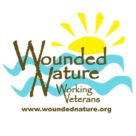Before the clean-up date:
- Determine areas in greatest need and prioritize the list with local environmental officials.
- Schedule the date and time. A beach clean-up should coincide with low tide. The muster should happen 3 hours before low tide and efforts should be made to get volunteers on site 2 hours before and work until 2 hours after the low tide.
- Determine a volunteer muster point.
- Contact local media outlets and ask them to announce the clean-up, muster point and time, and requirements for volunteers to participate.
- Contact local marinas requesting volunteer boats to transport volunteers and trash to and from the cleanup areas.
- Arrange to have the use of a trash dumpster at the muster point for volunteers to dump their bags of trash in.
Day of the cleanup:
- Meet with volunteers and divide into 4-8-person teams.
- Each team will have one person serve as the team leader
- The team leader will be responsible for spreading out their team to cover the beach, high tide trash line, and trash washover beyond the high tide area.
- Have volunteers sign a release form.
- Educate volunteers about the impact of marine litter on wildlife. Points to cover include:
- Ingestion and intestinal blockage – causes food to back up behind the blockage creating gas. Animals can no longer submerge and float on the surface while being eaten alive.
- Entanglements – confines an animal at the point of contact and they either starve or drown.
- Binding – Constricts a body limb or neck area causing limb loss, suffocation, or serious infection resulting in a slow death.
- Injuries – generally caused by broken glass and sharp metal objects. While sea turtles have tough skin, the pressure exerted by their body weight when coming ashore to nest tears the skin as they move over these objects.
- Poisoning – Treated lumber used to build most private docks, piers, and decks is wood that has been soaked in pesticides and coated with creosote. This causes severe skin inflammation and a slow painful death as the pesticide works internally to kill the fish or animal.
- Educate volunteers about the human hazards of participating in the beach cleanup. Points to cover include:
-
- Spiders, snakes, and other creatures will hide under objects.
- Medical waste – if needles or other medical waste items are found a team leader should be informed. The team leader should photograph the waste, collect it in a separate bag, and report it to authorities after the cleanup.
- Trash hazards – many objects such as broken glass and sharp metal objects will cut and puncture the skin.
-
Other items to discuss with volunteers. Points to cover include:
- Finding valuables, including galleon coins. They MUST be reported. In most cases, authorities will return the item(s) to you. In some areas, it is a crime that involves a substantial fine and prison time if the item(s) is not reported.
- Drugs. If drugs are found, leave them in place unless the tide is near. Then move them to a higher area and call the team leader. The team leader will contact the event coordinator to get the proper law enforcement authorities out to the site.
- Dead bodies. Whatever it is, leave it alone. For any sea creatures, the team should photograph it. If by some odd chance, anyone believes human remains have been found, the team leader should call the event coordinator so that the proper law enforcement agency can be dispatched.
